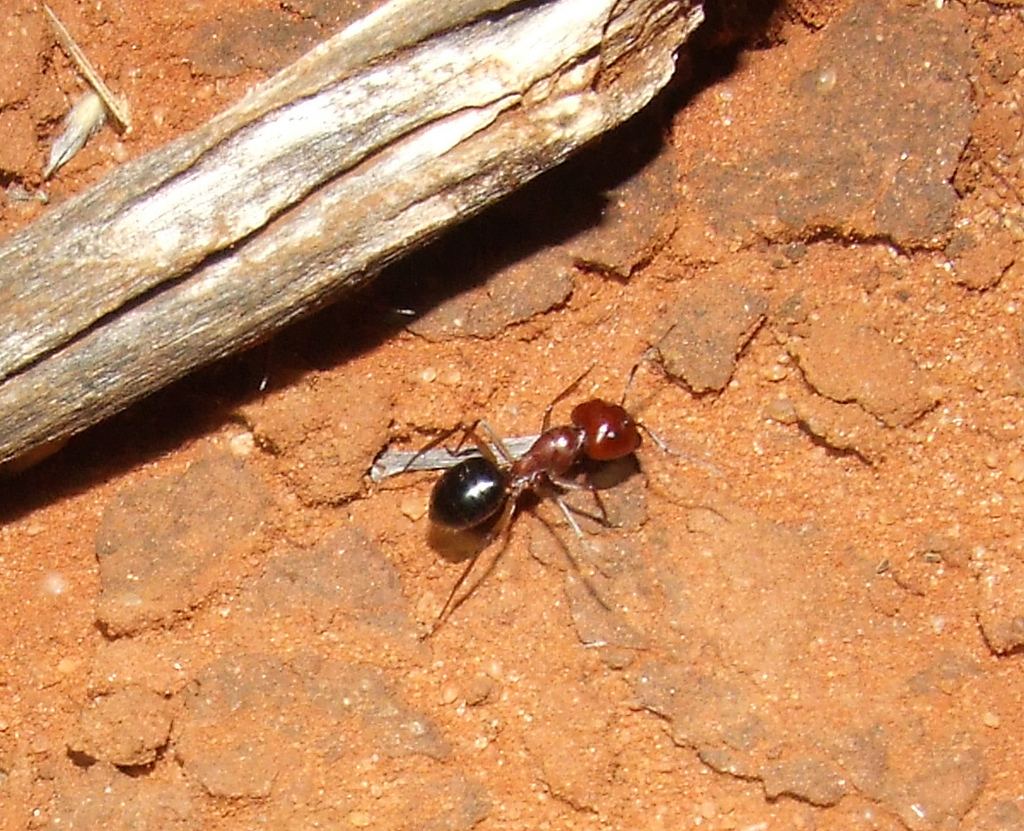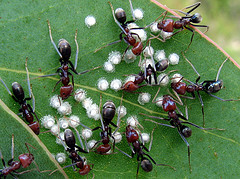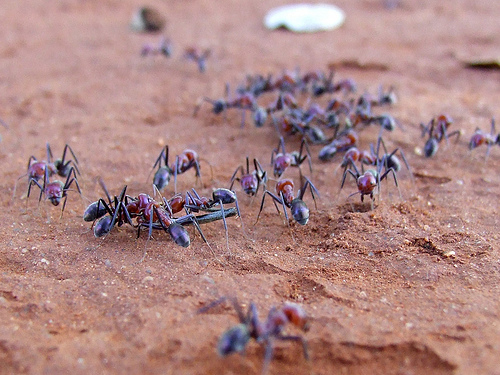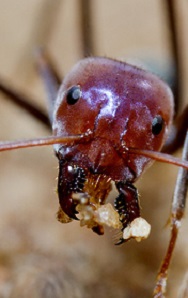Adaptation
Iridomyrmex purpureus is a very unique organism.
This ant lives in a very hot and dry environment with about 1300
described species and subspecies concentrated within Australia
(Andersen and Patel 1994; Holldobler and Carlin 1985).
This has driven the meat ant to be very aggressive to succeed
and stay atop the food web of the ant community (Thomas et al.
1998).
I. purpureus workers of the colony are suited with very
strong jaws to aid in foraging, fighting and as a mode of defense
against predation (Harris and Berry 2013; Australian Museum 2010).
These ants are atop the ant food chain as they fight and defend in
huge numbers, often sending a signal to bring forth more worker ants
to aid in the fight (Thomas et al. 1998).
signal to bring forth more worker ants
to aid in the fight (Thomas et al. 1998).
The signals that are sent out are actually chemical signals as the primary form of communication among I. purpureus. These chemical cues are used for colony recognition, determining nests/satellite nests, neighboring colonies, signaling attacks, food pathways, etc. (Thomas et al. 1998; Harris and Berry 2013). While attacking a predator the meat ant may use its powerful mandibles and produce a defensive compound from the gaster produced via the anal gland. This chemical compound produces a pungent odor which may fend off attackers and also is used as a signal to the colony that an attack has occurred (Australian Museum 2010; Thomas et al. 1998). The meat ant is so aggressive that it can fend off most organisms by attacking with hundreds of workers at once. Once the signal has been sent out via the hydrocarbon chemical communication, more and more workers continue to work together to take on the predator or attacker (Harris and Berry 2013).
The meat ant possesses the ability to kill a very poisonous pest,
the cane toad. The cane toad’s toxin is usually toxic and
leads to death of the predator. Meat ants are able to kill the
cane toad without affect of the poison. The ants are able to
attack the toad full force, as the toad simply sits there
anticipating the poison to kill its predator (Ward-Fear et al.
2009).
Continue to the Reproduction page


